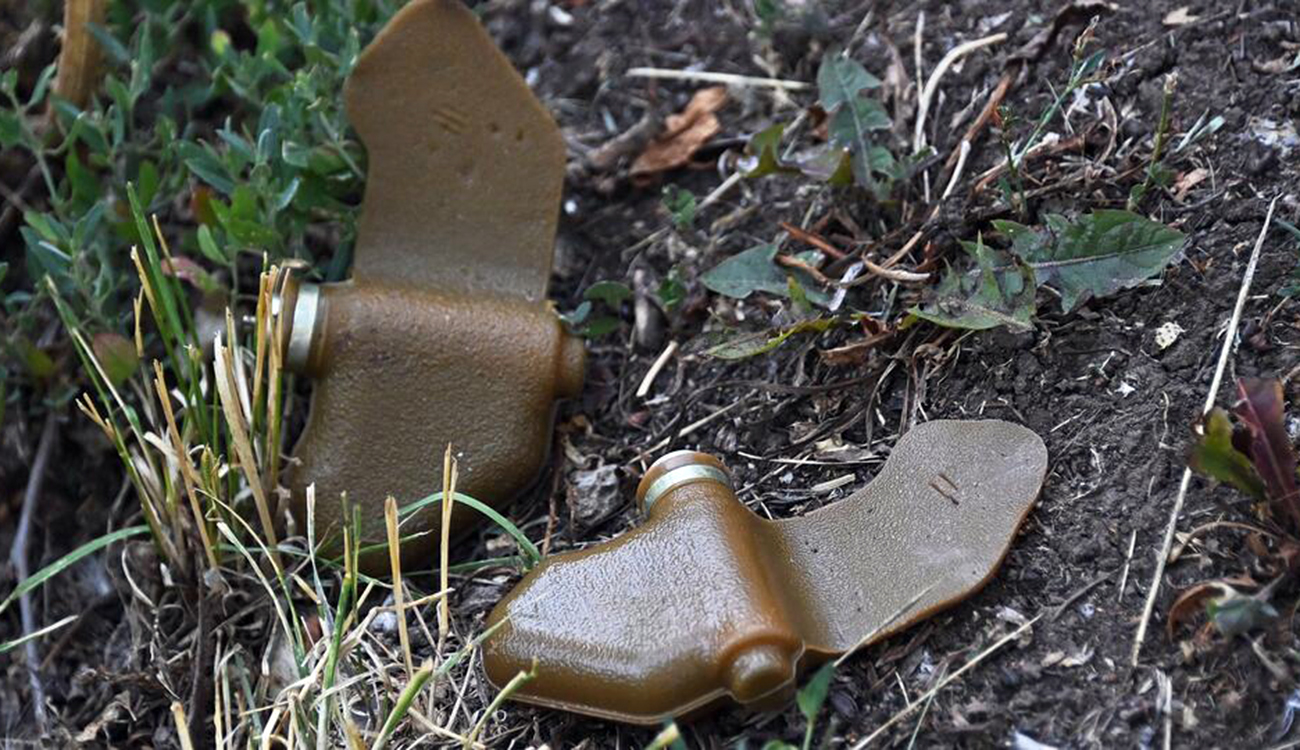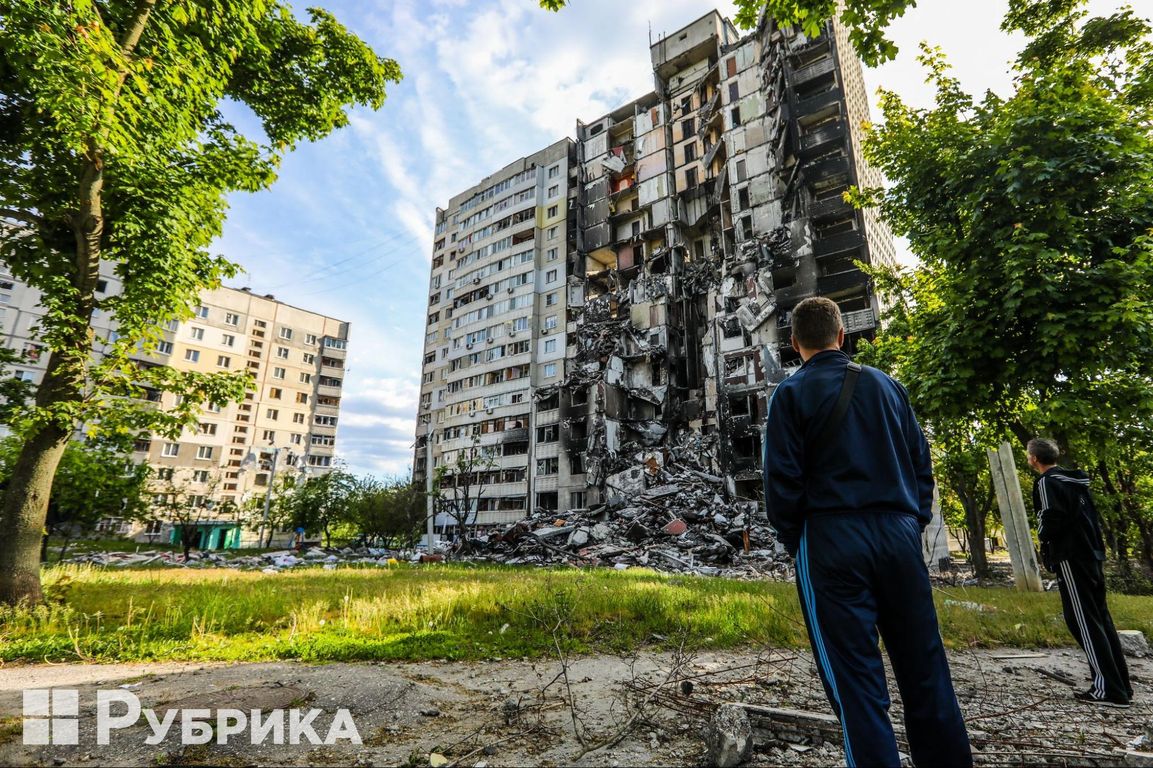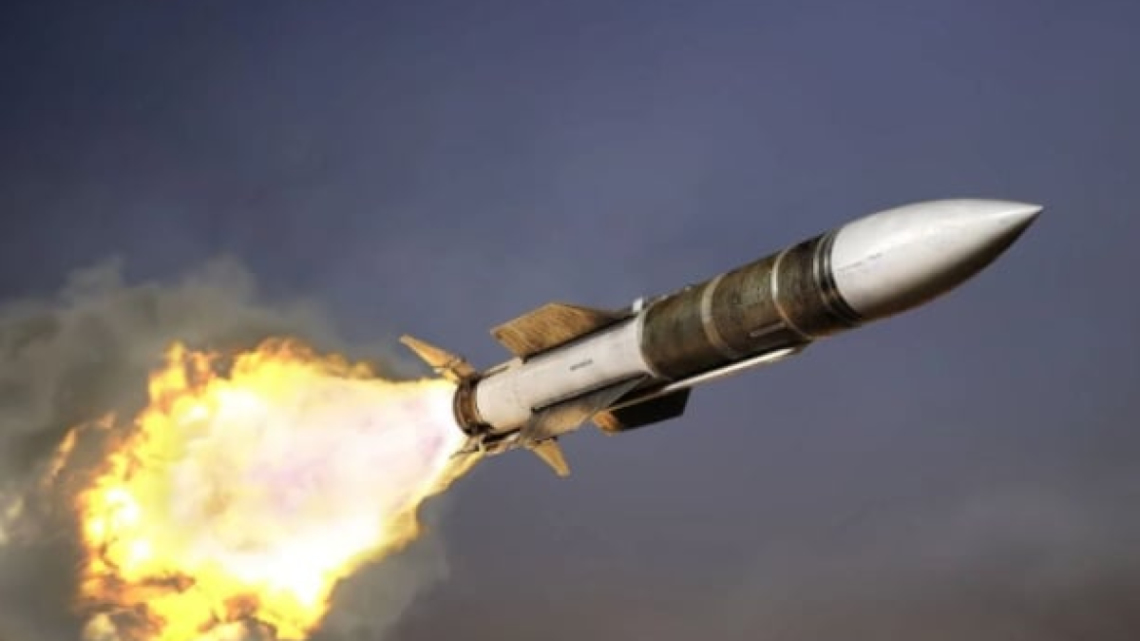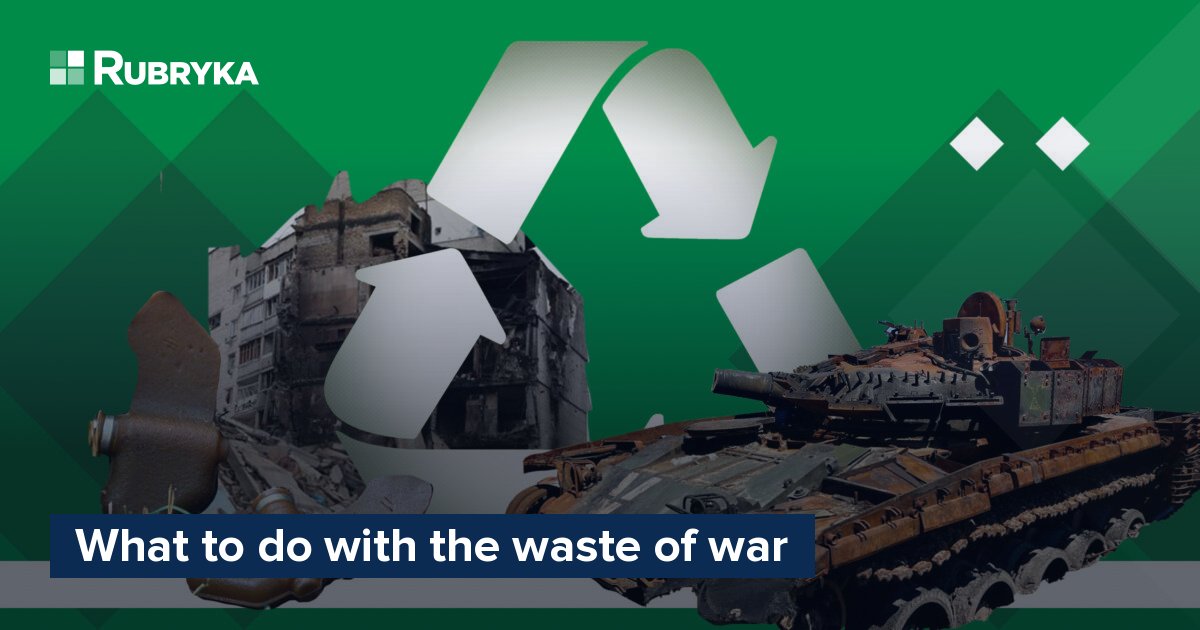
What is the problem?
Since the beginning of the full-scale armed aggression, russian troops have launched a total of almost 5,000 missiles, 3,500 air strikes and 1,100 drone attacks on Ukrainian targets. Almost a third of Ukraine's territory is currently mined — both liberated and temporarily occupied.
As of October 7, 2022, 94,596 destroyed infrastructure objects were recorded in various regions of Ukraine. Of them, more than 25,000 are in the Kyiv region, more than 20,000 in the Donetsk region, and more than 9,000 in the Kharkiv region. In particular, more than 74,000 residential buildings were destroyed. And new targets are being added every day as russian shelling continues.
Remnants of rockets, tanks, and mines still pose a danger
Missiles are terrifying not only because they can destroy an entire apartment block in a single strike. Even when a rocket is shot down by the air defense, it breaks into thousands of tiny shards, littering hazardous chemicals into the environment, says Yuliia Markhel, leader of the Ukrainian youth movement "Let's do it Ukraine."
 Heptyl is one of the most toxic substances in the rocket. In living organisms, heptyl damages the mucous membranes, central nervous system, and respiratory organs. At a high enough concentration, exposure can lead to loss of consciousness.
Heptyl is one of the most toxic substances in the rocket. In living organisms, heptyl damages the mucous membranes, central nervous system, and respiratory organs. At a high enough concentration, exposure can lead to loss of consciousness.
"This is how rockets affect a person, but imagine what will happen to the soil and water," Markhel explains. "The places where the fragments of rockets fell must be immediately decontaminated, and the remains of missiles and fuel must be properly disposed of. Otherwise, it will lead to an environmental disaster. Some of the destroyed equipment is taken away by law enforcement officers because they serve as material evidence in criminal cases of russia's crimes against Ukraine."
Missiles do harm not only to Ukraine's environment. Their fuel, coolants, and other chemicals generated during the missile launch put a large amount of waste into the planet's ecosystem. Spent munitions left over from war can contain dangerous chemicals — toxic metals, explosives, and other compounds.
Missile shells are most often made of non-ferrous metal alloys or steel, and metal pollution can have different consequences for soils. Metal-contaminated soils can lose their ability to hold water and air, affecting plant life. An excessive amount of metals in the soil can also negatively affect the microorganisms living in it and contaminate its nutrients. If these chemicals are deposited in the soil, it can render it infertile.
The issue of mine safety in Ukraine has been relevant for a long time. To this day, European cities still perennially uncover unexploded shells from World War II. Ukraine's situation became more complicated with the beginning of the war in 2014, and the number of mines and shells remaining on Ukrainian land is unfathomable. According to the State Emergency Service, more than 300,000 square kilometers of Ukrainian territory are contaminated with munitions. As wildlife return to the forests where battles once flared, landmines can kill defenseless animals, cause forest fires, and release toxic substances into the air and soil.

Danger from medical waste left on the battlefield
Of course, Ukrainian defenders during hostilities do not care about the proper disposal of medical waste – especially when mere seconds can make the difference between life or death. The most important thing is survival; the ecologists, ecoactivists, and simply caring Ukrainians will take care of the environment later. No one will walk through the woods or fields to collect this waste amid war.
However, medical waste can pose a serious threat to the environment and human health if not processed and disposed of properly. Medical waste contains potentially dangerous biological and chemical substances that can affect the environment and human health.
Ruins of houses can pose risks
When concrete structures are destroyed, there are many risks of pollution because houses and other ruined buildings may contain many dangerous chemicals, such as mercury thermometers, medicines, and gas cylinders or structures that often contain asbestos and polychlorinated biphenyls, according to Olena Kazanska, public activist and representative of the initiative "Kyiv Green City."
What is the solution?
To understand how the restoration of territories will take place after Ukraine's victory, it is necessary to divide this process into two major stages: considering short-term and long-term perspectives.
In the short term, Ukraine should focus on eliminating and reducing immediate risks to human health and the environment. The preparation and implementation of comprehensive environmental clean-up measures, especially related to the collection, safe disposal, and processing of huge amounts of military and other waste, will help reduce the immediate risks to human health. There will also be an urgent need to repair and restore a more efficient environmental infrastructure to ensure safe drinking water, adequate sanitation, and proper waste collection, storage, and processing. When determining the priority of actions, the existing and potential impact on human health should be considered.
"Despite the ongoing hostilities, the state cannot delay housing restoration in the de-occupied territories because people cannot spend the winter in destroyed homes," said Kyrylo Tymoshenko, advisor to the President Zelensky, in an October 2022 press release.Zelensky's office has developed a Fast Recovery Plan focused on rebuilding 38,000 critical infrastructure objects, but only around 11,000 objects have been restored at the expense of the state budget.
Anastasiia Skok, environmental director of the NGO "SaveDnipro," is convinced that most construction waste is reused in construction. Some parts of the foundation, roads, or structures are sometimes laid from it.

The Ukrainian Reconstruction Fund was created to attract financial aid from foreign governments, agencies, and international organizations. It is a financial institution that should become a tool for transparently obtaining and effectively using international assistance for the reconstruction of infrastructure in Ukraine.
In the long term, post-war economic development process should transform Ukraine into an eco-friendly economy with zero net greenhouse gas emissions. The green transition will ensure greater economic efficiency, higher competitiveness of Ukraine on the European and world markets, and the well-being of its population.
Environmental norms, standards, technical regulations, and a fundamental transformation of the regulatory system are key to ensuring the effective achievement of ecological goals while simultaneously reducing administrative burdens and barriers to investment and innovation.
Ukraine should also continue to modernize conservation institutions at the national and regional levels to ensure high administrative capacity to plan and implement environmentally sustainable restoration measures and regulate them in a transparent, professional, and results-oriented manner.
Will it definitely work?
After Ukraine's victory and the liberation of the lands, comprehensive programs to clean up the territories and restore them must be implemented. A part of such programs will be regional waste management plans, within the framework of which experts will analyze the state of waste pollution, develop measures to clean the territories of various categories of waste, and also determine the sources of financing for such activities since it will be quite expensive to clean such an area of a huge amount of waste.
"Right now, dozens of programs are being developed about what to do with the environmental consequences of the russian invasion. The first developments are already in place. For example, the State Environmental Inspection (SEI) has developed a methodology for assessing environmental damage from hostilities. Over time, together with international partners, mechanisms for working with the consequences of the war will be worked out, which will correspond to the EU directives that Ukraine has implemented," says Anastasia Skok, environmental director of the NGO "SaveDnipro."
In order to dispose of missiles, it is necessary to understand the process. Yuliia Markhel, the leader of the All-Ukrainian youth movement "Let's do it Ukraine," notes that the process is quite complicated and usually consists of the following stages:
- Missile disassembly:This process involves dismantling various components, including electronics, solid fuel engines, and other essential parts while information is extracted from the missile's flight equipment.
- Cutting: The rocket is cut into recyclable parts.
- Recycling: Metal parts can be turned into metal ingots and Kevlar fillers into the fabric for protective clothing.
- Disposal: If removal is not possible, the missile can be disposed of in special areas that comply with environmental protection requirements for the storage of hazardous waste.

"The disposal of burnt military equipment is quite similar to the disposal of the remains of missiles. First, this equipment is dismantled, and everything that can be reused or recycled is removed. These can be electronic components, metal parts, and other materials. And then, again, everything that cannot be disposed of, processed, or reused is buried," says Markhel.
Specialist demining services neutralize and dispose of landmines and other unexploded projectiles by first collecting iron and other metal parts from the projectiles and processing them at special plants. Waste that cannot be processed can be collected and disposed of by special services engaged in demining. If the remnants of an exploded projectile contain hazardous chemicals or toxic waste, they are removed from the site of the explosion and disposed of in accordance with the established rules.
In order to properly dispose of medical waste, it first needs to be sorted into different types, such as plastic, fabric with organic matter residues, rubber, metal, et cetera — but according to Kazanska, Ukraine's pre-war infrastructure lacked in adequate sorting.
"Special containers must be installed and factories built for further disposal of all medical substances. If they are not, then these wastes end up in natural landfills and then in the soil. Therefore, the fate of medical waste is still unclear. Another problem is that many recycling plants were destroyed during the invasion, and it will take 3-5 years to build new ones."

The government has a plan for recycling construction materials that accounts for the differences that arise from buildings destroyed by missiles and shelling, according to the Minister of Environment Protection and Natural Resources, Ruslan Strilets.
According to Yuliia Markhel, the remains of destroyed buildings can be sorted for reuse and recycling. For example, metal materials can be remelted, and concrete materials can be recycled for use in new buildings. If the remains of destroyed buildings cannot be reused or recycled, they must be disposed of in specialized plants.
In the de-occupied territories, for example, in the Kyiv region, 50 centralized collection sites were formed to sort and process demolition waste. Some debris was put to use in rebuilding roads or temporary crossings.
It is important that the regional administrations properly organize this work. The mechanism in place works as follows: communities take demolition waste to temporary storage sites, where they are further sorted into hazardous, construction waste, etc. Construction waste is shredded for reuse.
Ukraine's cities are not the first in history to have rebuild following the destruction of war. Following near-complete destruction in World War II, the British city of Coventry went through 20 years of rigorously planned and executed reconstruction process that led it on to an economic boom in the 1960s., Similarly, Japan's capital Tokyo was destroyed twice – first by a massive earthquake in 1923, and later in World War II. Today, it is a thriving metropolis that would have been unimaginable just looking at the piles of rubble one hundred years ago – and an example giving hope to Ukrainians that their country will be rebuilt even better than before.








